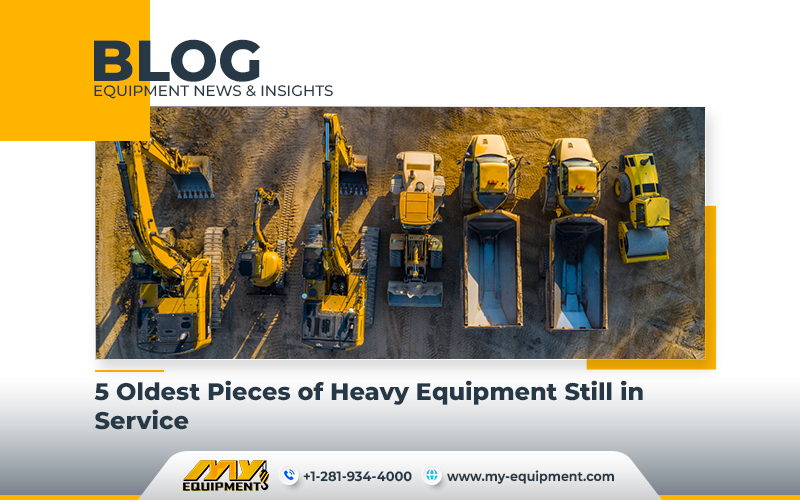The construction industry stands as a testament to the enduring quality and engineering prowess of heavy equipment. In this constantly changing technological landscape, there are still several pieces of heavy equipment that have defied the odds and continue to serve well despite their age. Today let us look into five of the oldest heavy equipment pieces that are still in operation.
Steam Shovel
Dating back to the late 19th century, the steam shovel is a marvel of a machine that really revolutionized excavation. Its earlier version that was invented by William S. Otis, paved the way for the modern earthmoving equipment we see now. These iconic machines, though a little rare now, still find application in historical preservation projects.
Bulldozer – Caterpillar Seventy
First introduced in the year 1929, the Caterpillar Seventy bulldozer brought power and efficiency like never before to earthmoving. Its design laid the foundation for the modern bulldozers for sale available in markets nowadays. And what is even more amazing is that a few meticulously maintained units of the machine are still operational, showcasing Caterpillar’s lasting impact or durability.
Crawler Crane – Bucyrus Erie 88B
The Bucyrus Erie 88B crawler crane that was introduced in the 1940s, remains as a proof of longevity and durability of heavy equipment. With a distinct lattice boom, this used crane found utility in various heavy lifting applications. A handful of these vintage cranes are operational to this day.
Excavator – Ruston Bucyrus 10RB
The Ruston Bucyrus 10RB excavator, dating back to the mid-20th century, showcases the enduring quality of British engineering. Renowned for its versatility, this excavator was employed in a lot of construction and mining tasks. A select number of these machines continue to prove their mettle in some projects.
Wheel Loader – Michigan 75B
The Michigan 75B wheel loader that was produced in the 1950s, embodies functional simplicity. Characterized by its durable construction, this wheel loader excelled in material handling tasks. Several of these workhorses remain operational now too.
It should be clear that the heavy equipment industry’s history is rich with innovations that have stood the test of time. It won’t be too much to say that these five oldest pieces of heavy equipment are legacies in action. Their continued service underscores their reliability and the really big impact that they have had on shaping modern construction practices.


 1400 Broadfield Blvd, Houston, TX 77084,
USA.
1400 Broadfield Blvd, Houston, TX 77084,
USA.